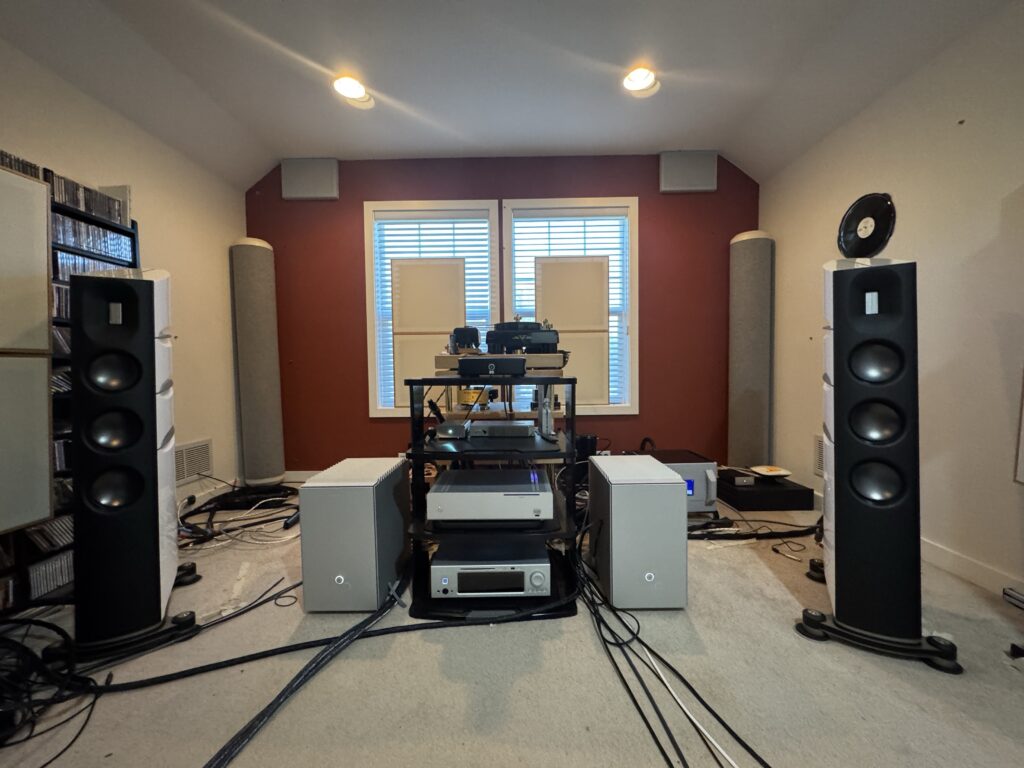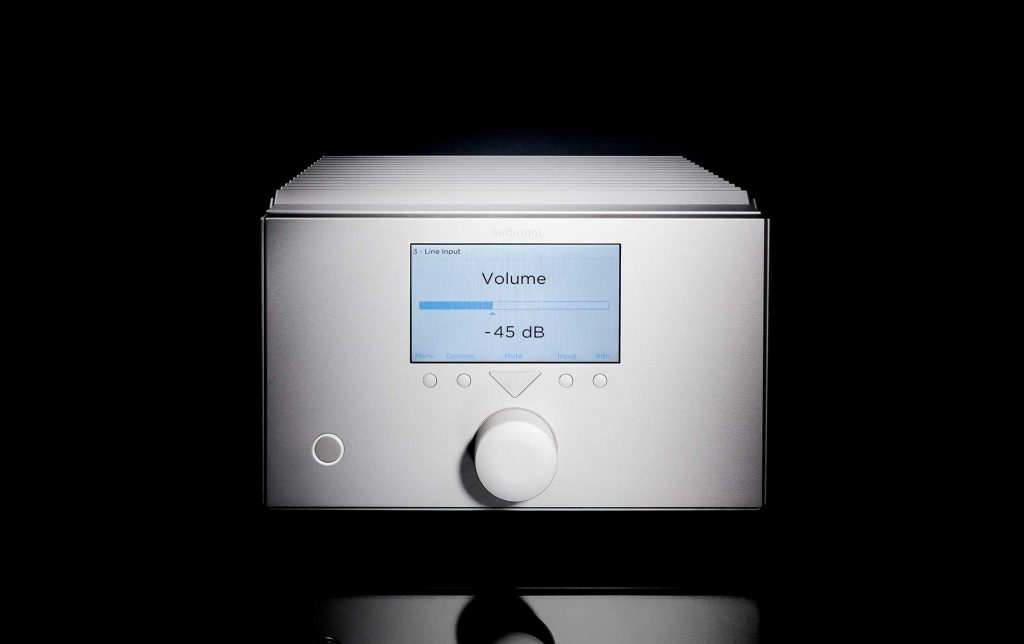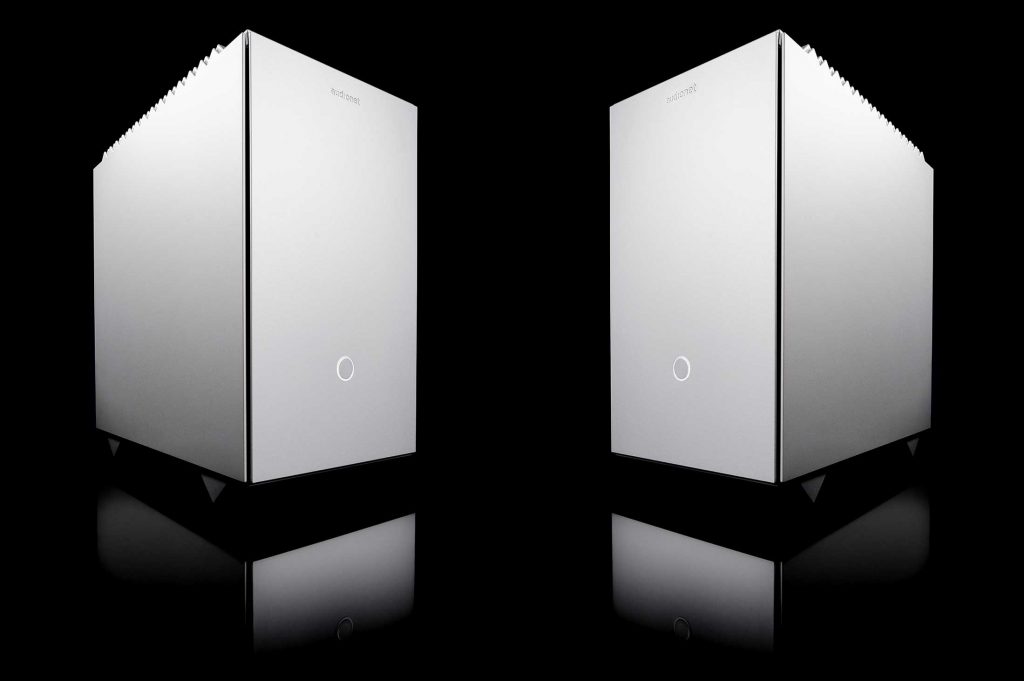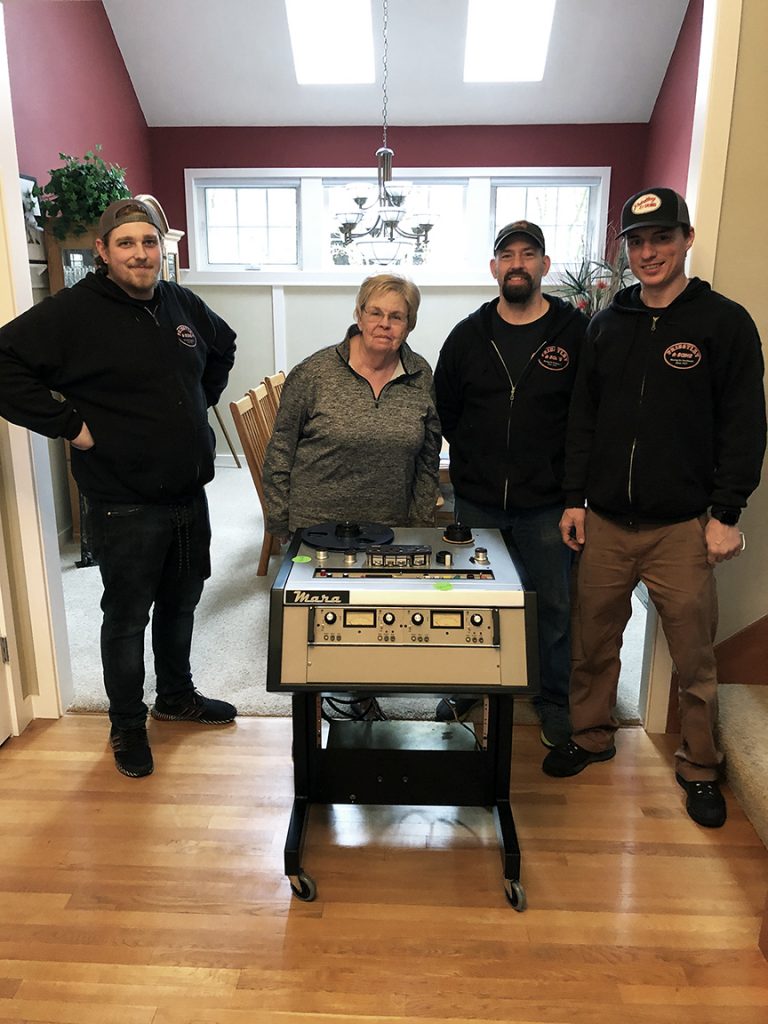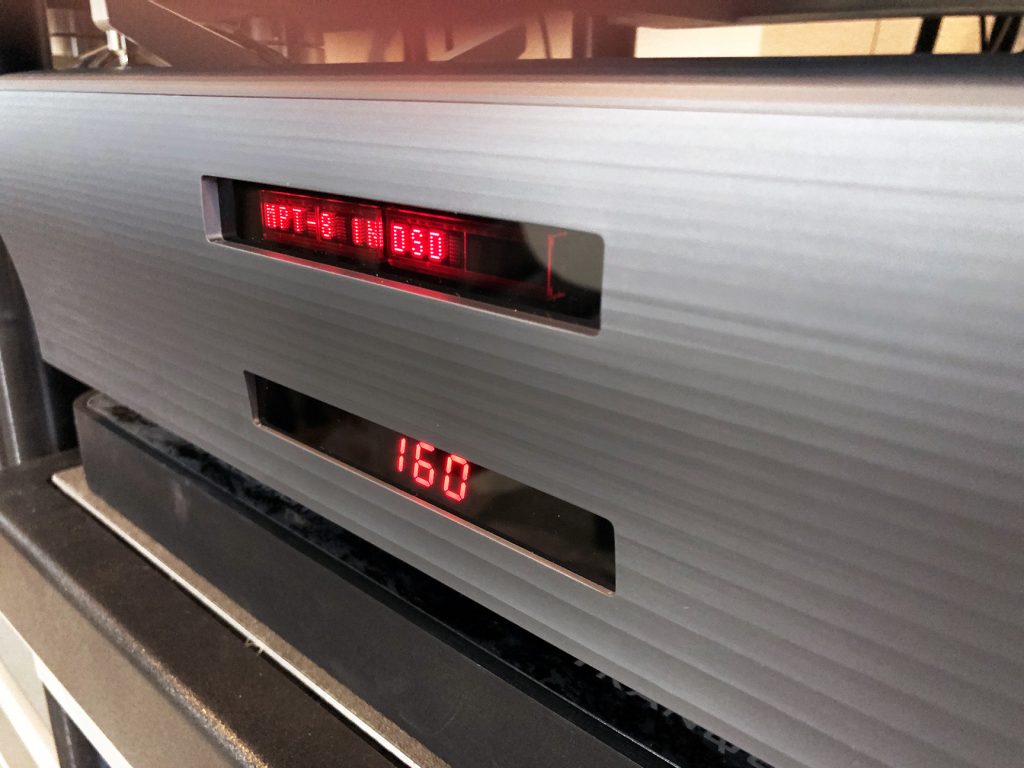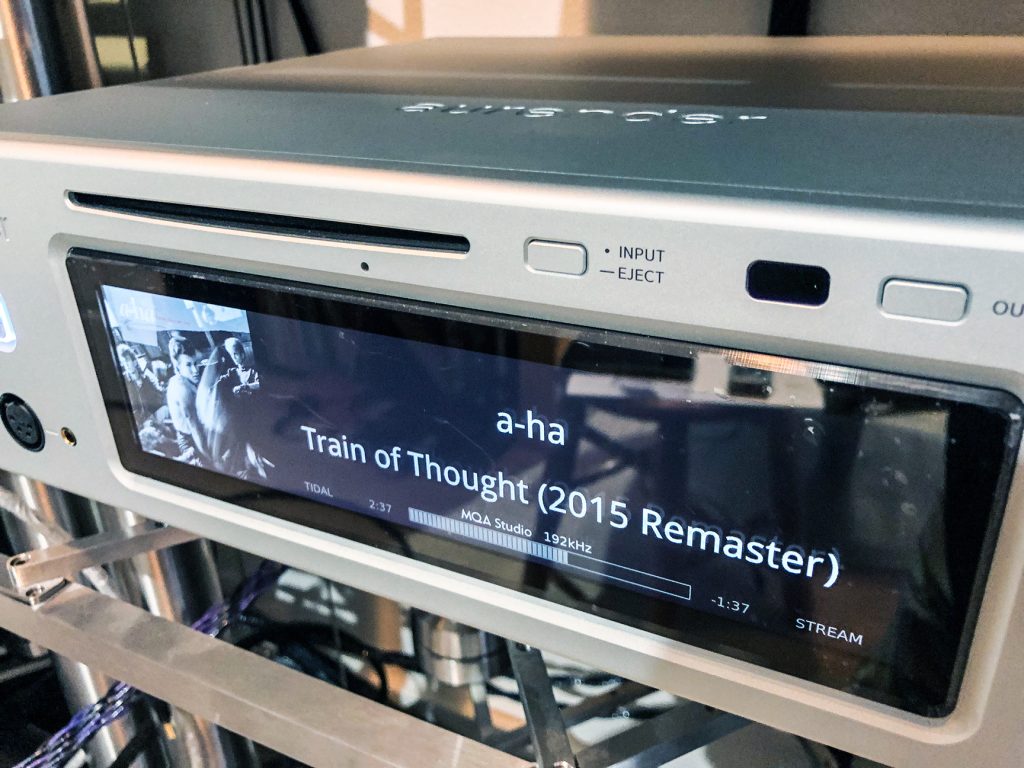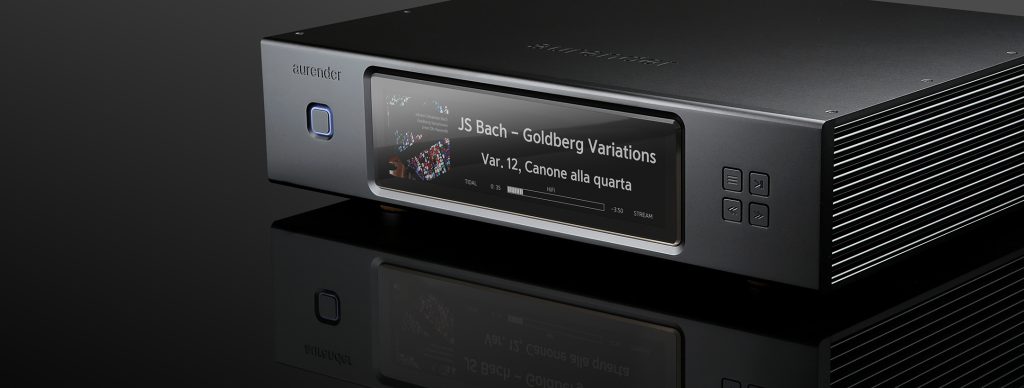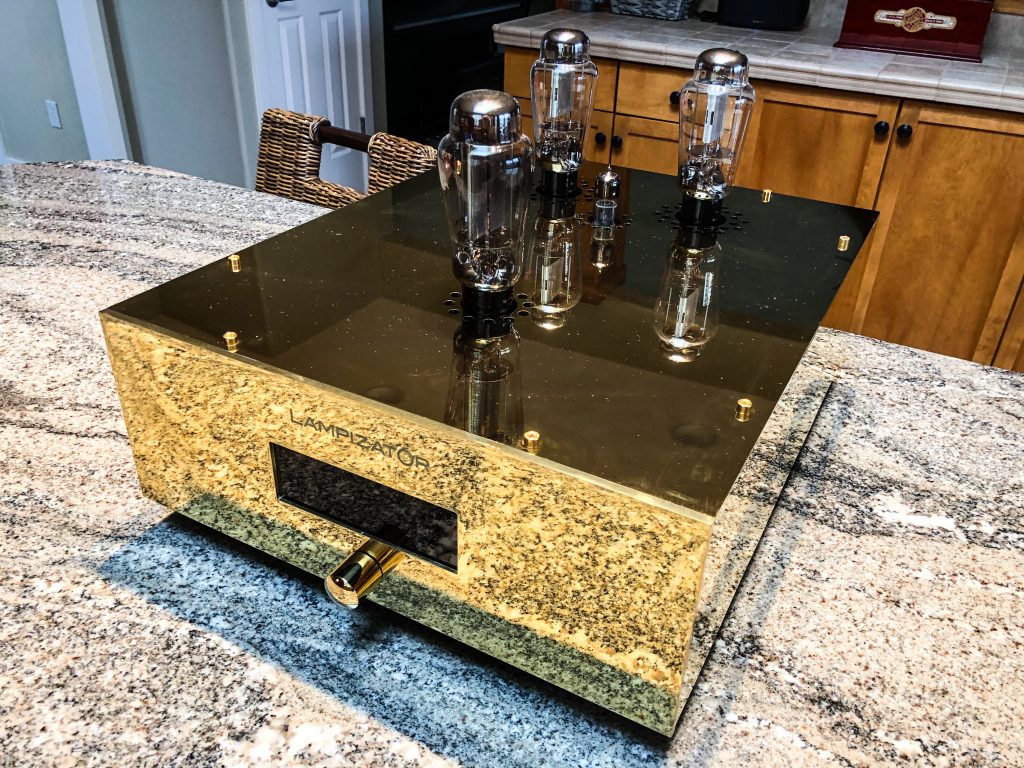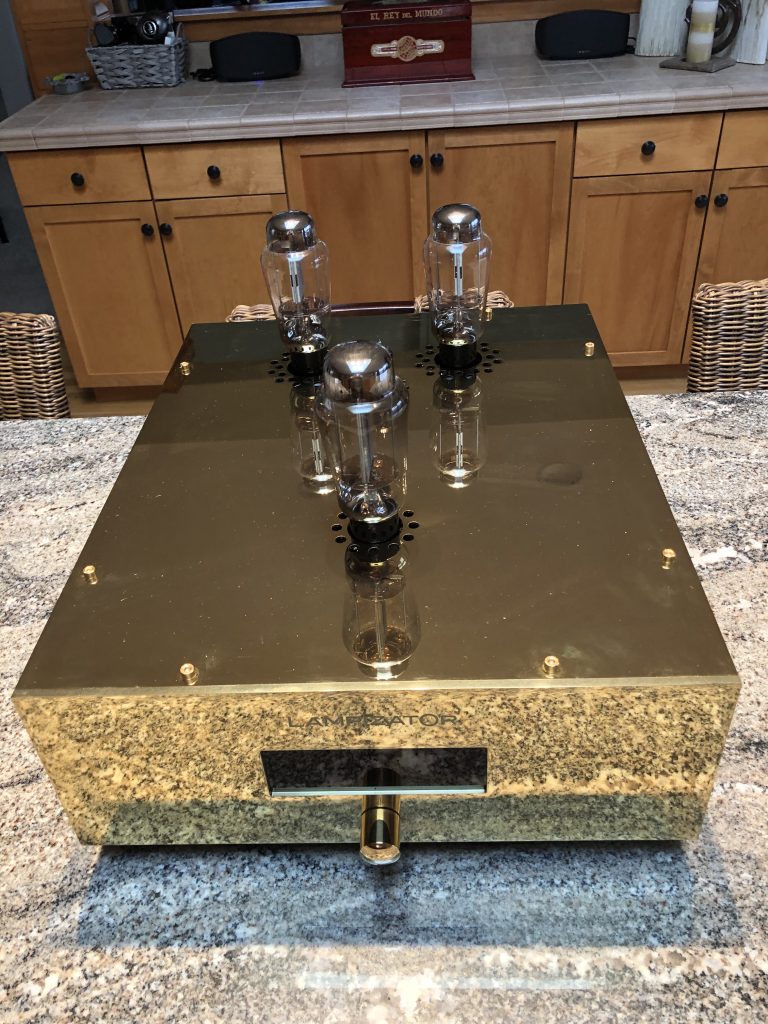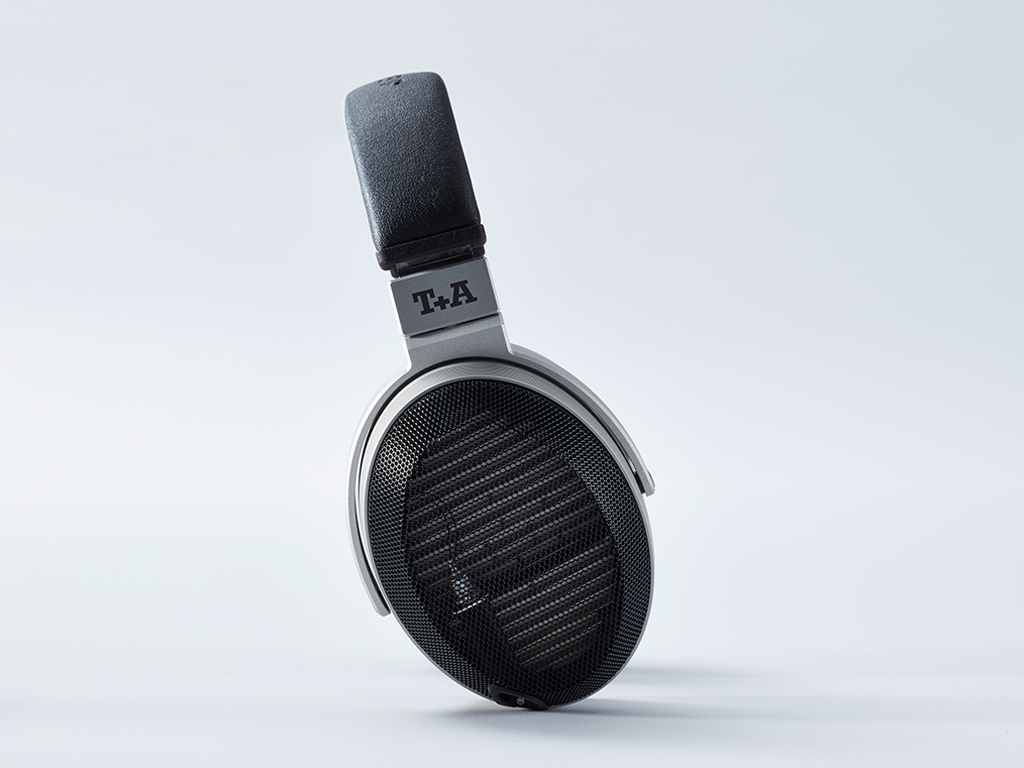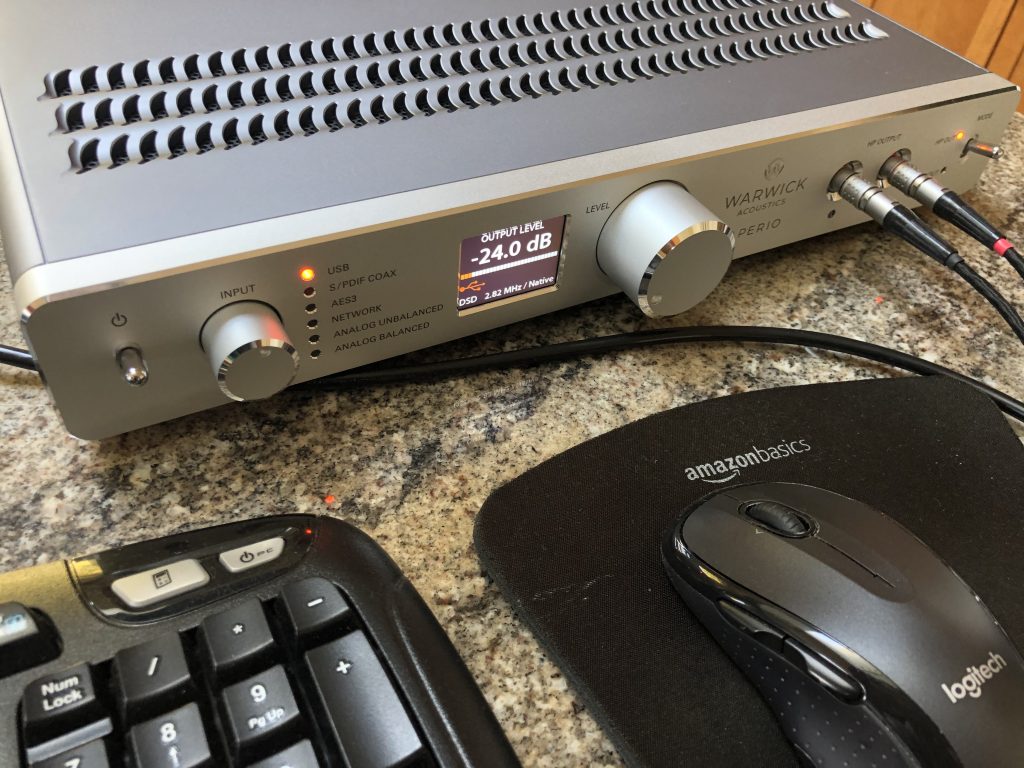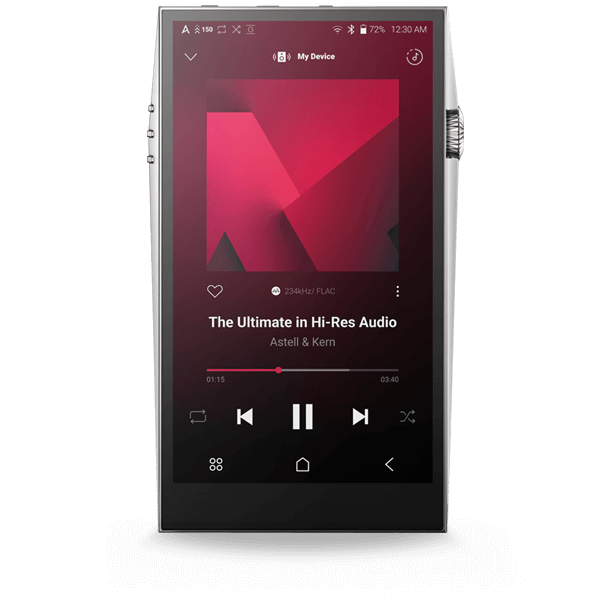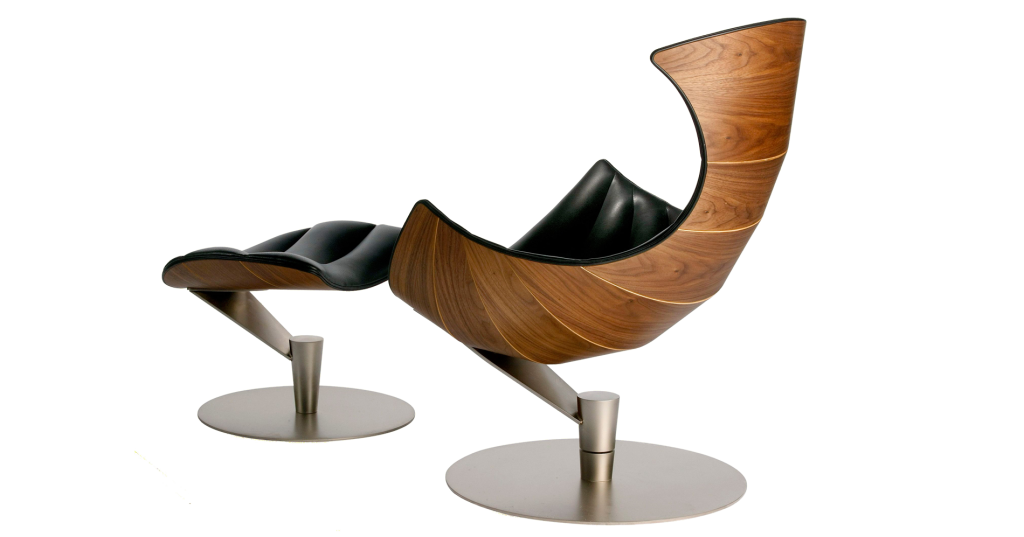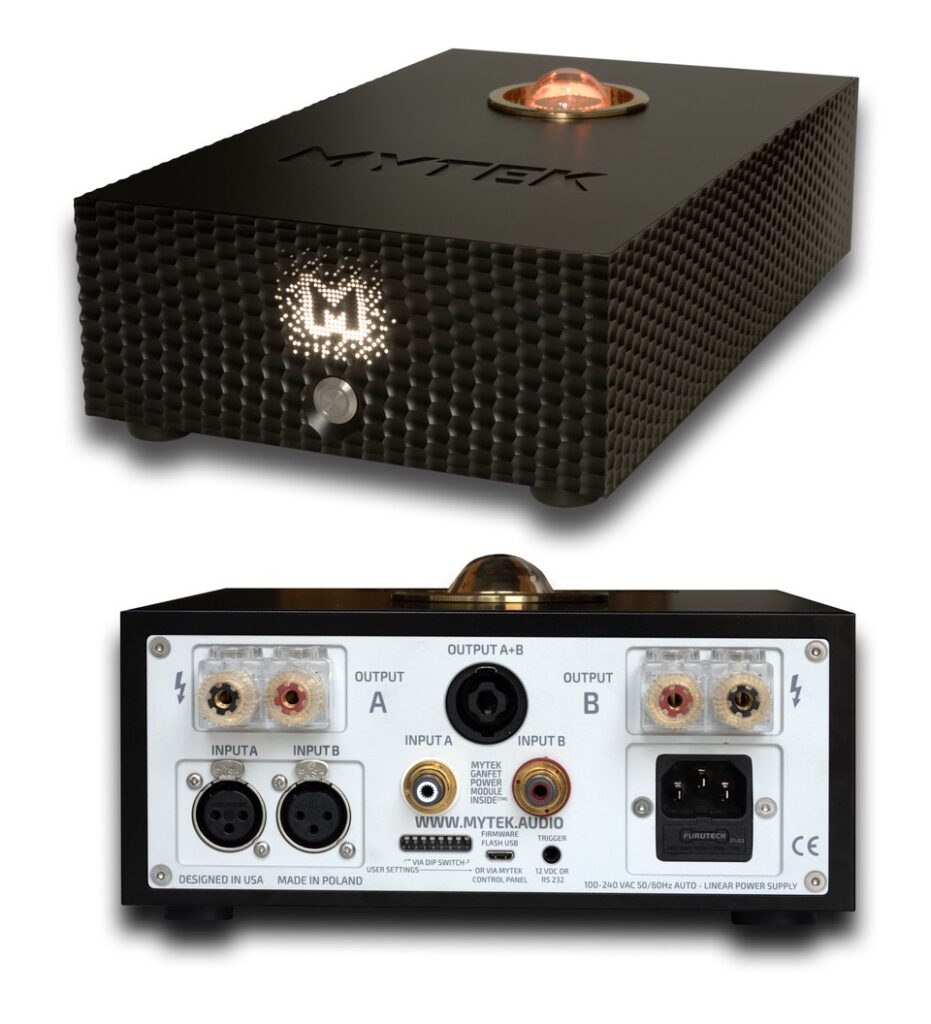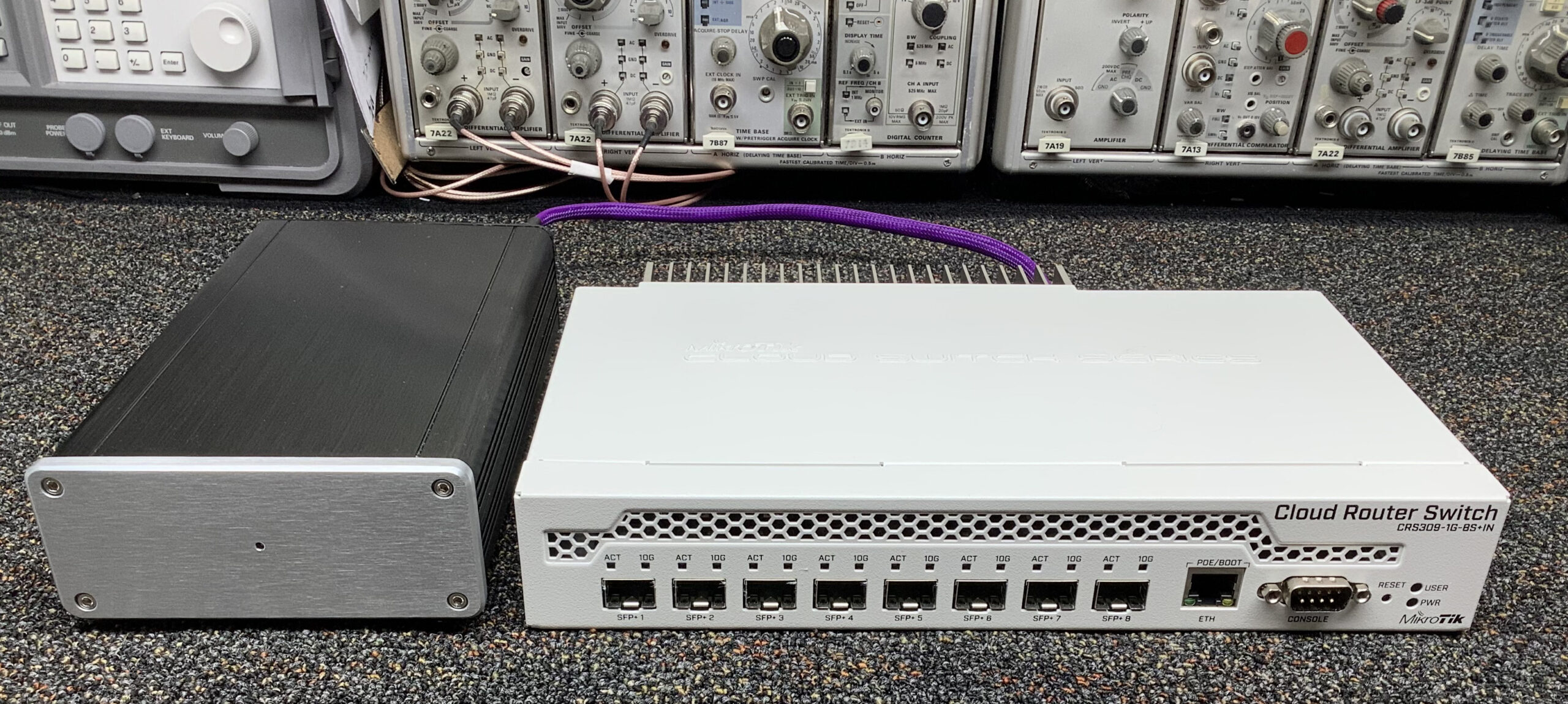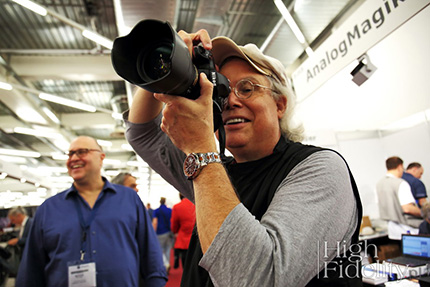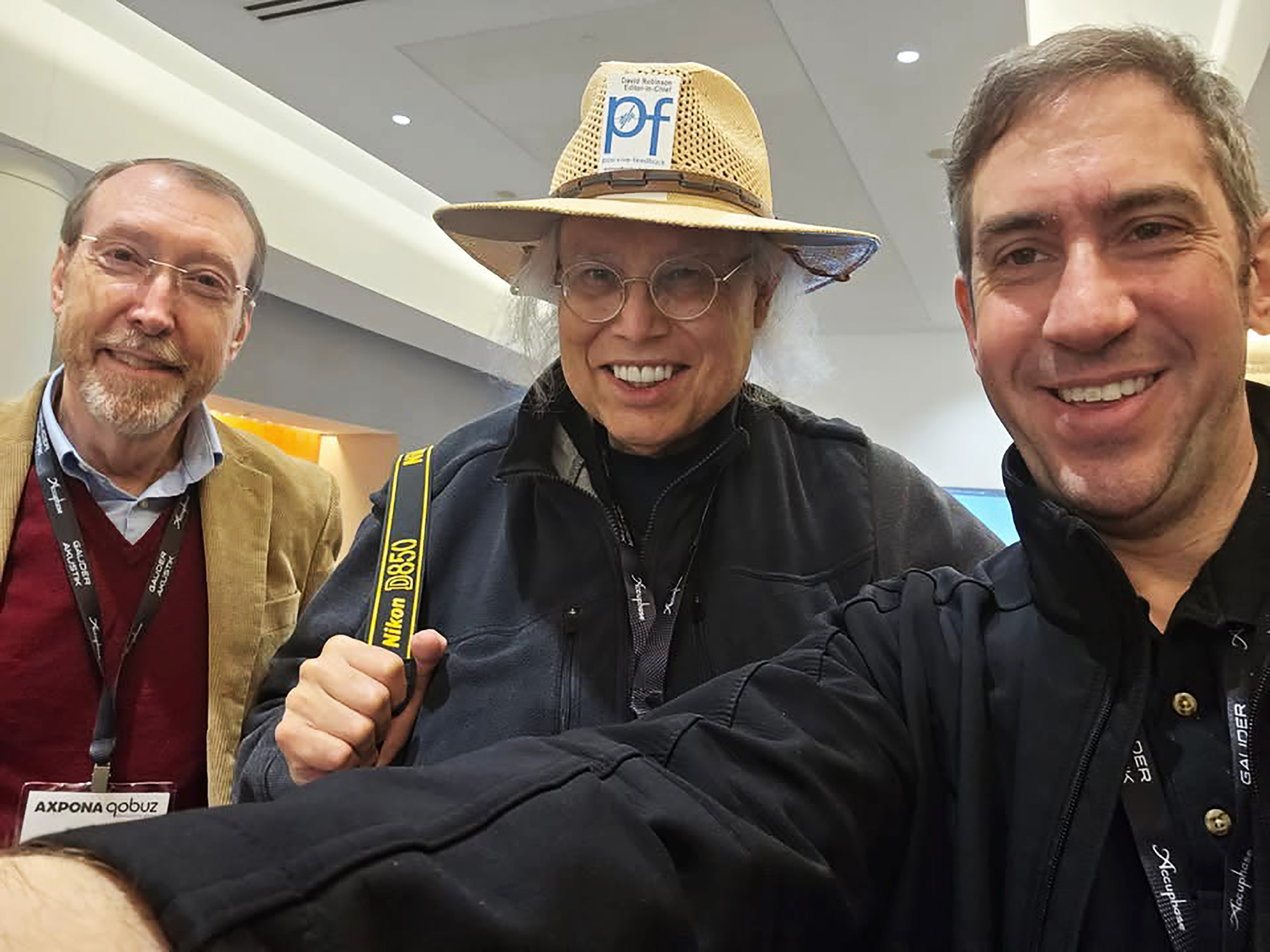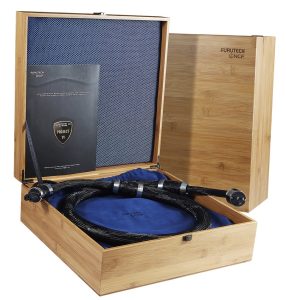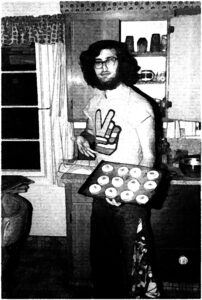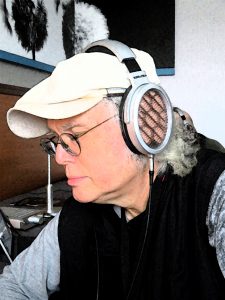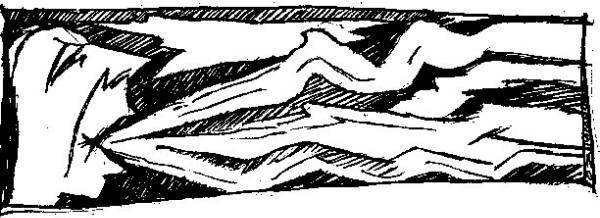
Damn. How does this happen?
Every year, I work hard to compile my list of Brutus Award winners for the end of the year; every year I promise myself that I'll complete this award article way ahead of the curve; and every year, this deadline bushwhacks me. Bloody hell. You'd better appreciate it amigos…you'll never know what goes into these lists. A year's worth of work, distilled into this small space.
Well, anyways…
For those of you new to it, the Positive Feedback Brutus Awards are given at the end of each year by Dave Clark and I. They are awards for the best products that we as editors have heard in our own listening rooms during the past year. Not at shows…not during visits to third-party sites…right in our own well-known spaces.
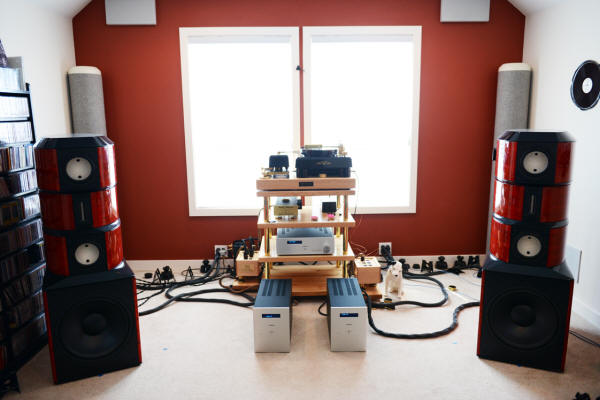
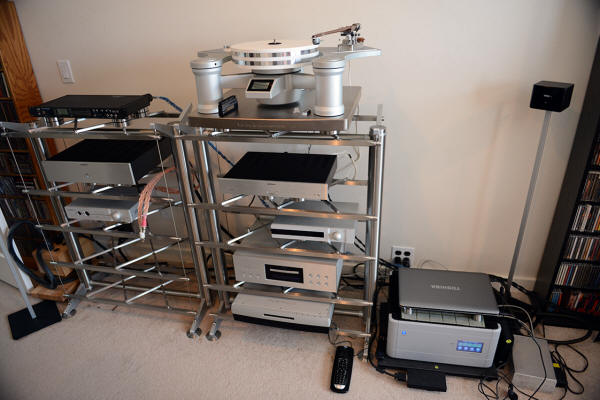
As I said all the way back in Issue 10, December of 2003, when I announced the Brutus Award:
"We at Positive Feedback are going to have two main categories of annual awards. The first will be our Brutus Award. This will be recognition given to "the best and the brightest" products that we have experienced in various categories in a given year. In hardware, these will range from "best bang for the buck" to "the best period, and hang the expense!" designs. In recordings, we'll be paying tribute to the best that we've found in various formats. In addition, we'll have a "Lifetime Achievement Award" that will recognize individuals whose contributions to fine audio in various respects has been both superior and sustained.
All products that are so recognized by PF will be work that has been reviewed by us personally; no design will be recognized that we do not have experience with in our listening rooms. This means that you, our readers, may disagree with our selections, wondering why this or that component, recording or individual was not mentioned. Quite apart from differences in taste/opinion, the answer is simple: we won't be mentioning any design that we haven't spent time with in our own listening rooms. If a product does not win a Brutus Award in a given category, this does not signify lack of merit—we just may not have gotten to work with it. You're certainly welcome to write to us and bring worthy components to our attention."
That's the spirit that's driven Dave Clark's and my Brutus Awards over the past eleven years now. The products that we recommend in these awards…together with our Writers' Choice Awards, published separately…represent our take on "the best we've heard this year."
Let's get on with it, then. My winners with the Big Mojo this year…in alphabetical order this time:
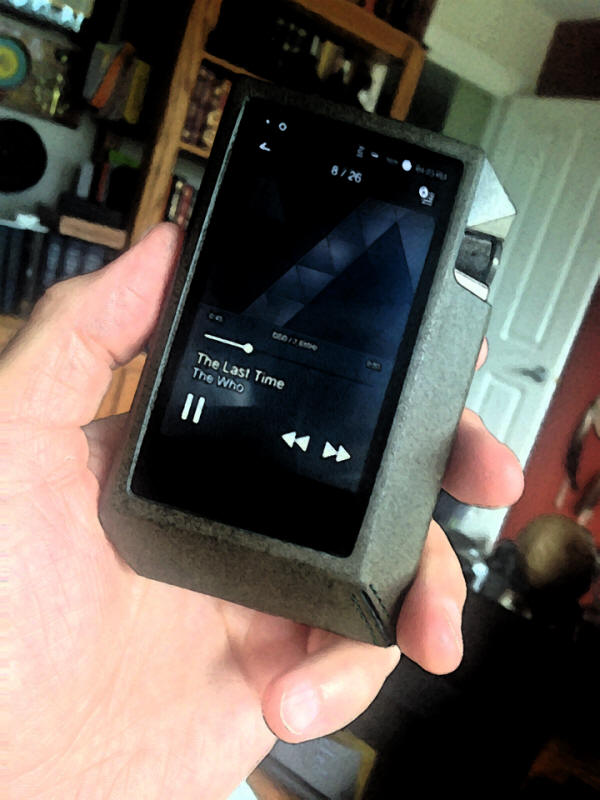
Astell & Kern AK-240 Portable Music Player
What can I say about the AK-240? In my experience, the AK-240 is simply the finest portable music player I've ever heard, bar none. Single and Double DSD, plus PCM in whatever rate you want. Incredibly compact form factor; remarkably fine, nuanced audio reproduction…certainly good enough to act as an easy-carry music server in listening rooms, while small and elegant enough to hit the road with you in your car, or confuse the folks at TSA on the way to a flight. Pair it with a good portable headphone amp, cables…I strongly recommend the Double Helix Cables (see below), and a first rate set of 'phones, and you're ready to hear what you've been missing while wasting your life on iTunes.
BTW: You really do want to hear Double DSD in your car. You really, really do.
The AK-240: King of the Road, King of the Skies, and a bloody fine music server, too. A Brutus Award winner without any further thought…my highest recommendation!
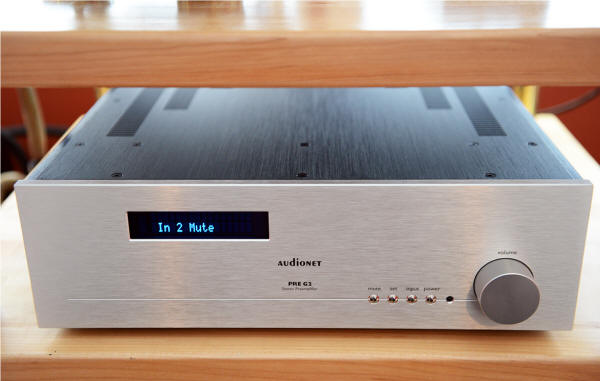
The Audionet reference series: Pre G2 preamp, PAM G2 phono amp with EPX power supply, MAX monoblocks
This is probably the biggest surprise find of the year for me. I had heard the Audionet reference system…the Pre G2 preamp, the PAM G2 phono amp with the separate EPX External Power Supply, and the MAX monoblocks amps…at audio shows before, but it's always hard to really get a handle on the quality of a system unless you're in your own listening room.
Having been impressed by my initial takes on the Audionet gear, I arranged with Bill Parish of GTT Audio to bring in this system to PF River City.
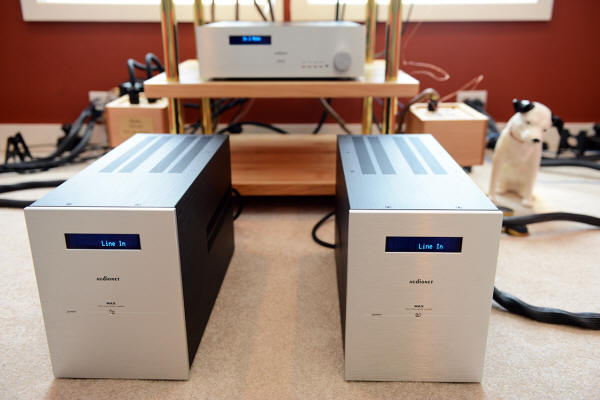
Let's cut to the chase: The results have been spectacular. We've had some great gear into our reference listening room over the years, and so I'm not easily impressed, but the Audionet system really jumped into the front rank of what we've had here. Here is a German company that I'd never heard of, and it steps up to the plate and—right out of the box, stone cold— knocks a grand slam home run! I'll be writing up my impressions very shortly now, but I can say that the sonic performance of this Audionet system is transparent, clean, very quick, and uncolored without being unmusical. The MAX monoblocks have plenty of horsepower for most all speaker loads, while the Pre G2 provides true reference-grade preamplification for all sources.
We've tried LPs from our Walker Audio Proscenium Black Diamond Level V/Magic Diamond MC and Soundsmith Hyperion MI cartridges via the Walker Audio Procession Phono Amp (see below), SACDs and Single/Double DSD from the Playback Designs MPS-5 with USB-X, LPs from our Wave Kinetics NVS turntable with Durand Telos Composite 12" tonearn and Ortofon Anna MC via the PAM G2 phono amp…even reel-to-reel tapes on our ATR Services Ampex ATR-102 tape recorder. The Audionet system was killer in every application.
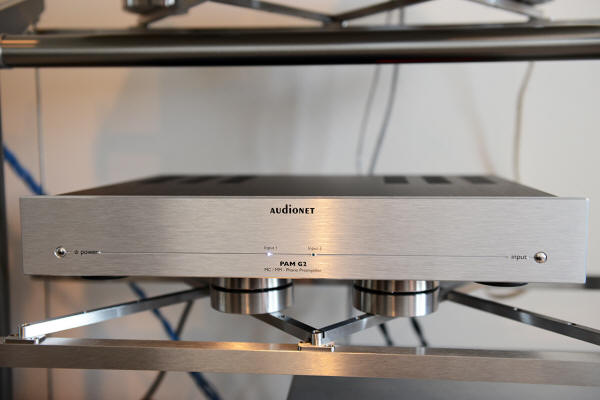
And the price-performance for the Audionet components is actually quite good in its price range.
Everyone who's heard Audionet here has been impressed with the first-rank sound. I think that you will be, too.
No doubt about it: Audionet is serious stuff, very real, and a slam-dunk winner of a set of 2014 Brutus Awards!
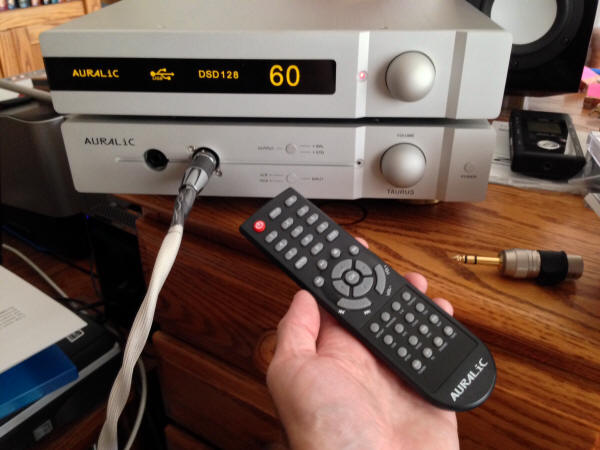
AURALiC TAURUS Mk. II headphone amp
The strikingly handsome TAURUS Mk. II headphone amp (review in PF issue 75) was a pleasant surprise in 2014. Having spent time with their excellent VEGA DSD DAC in 2013 and early 2014, I added the TAURUS Mk. II to the stack, and turned my attention to it. Regardless of the source DAC…AURUALiC, exaSound e28, Oppo HA-1…or the source optical drive…ModWright Oppo BDP-105 two-box tubed, or Teac Esoteric DV-60…the results were always very fine. Detail and clarity…real quickness…at up to Double DSD made the TAURUS Mk. II a splendid headphone amp with my Audeze LCD-3's and Oppo PM-1's.
The VEGA took one of my Brutus Awards last year; this year, the TAURUS Mk. II does the same. An easy call.
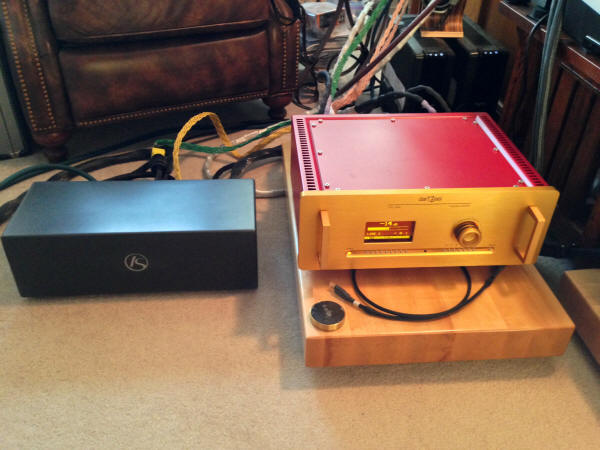
darTZeel CTH-8550 integrated amp (pictured here with the Kubala-Sosna XPander power distribution unit on the left)
Listen up: Anything darTZeel gets my attention immediately. Take heed, earthlings!
Hervé Deletraz has an amazing…nay, near-magical…ability to produce audio components at the highest level of quality. Whatever he makes is extraordinary; I haven't heard any of his designs that didn't make me smile!
I was finally able to get Hervé Delatraz to send along his essay at an integrated amplifier earlier in the year, and put it into our reference desktop system immediately. Rated at a hefty 220 Watts per at 8 Ohms, and 350 Watts at 4 Ohms, this is a true dual-mono design, with separate, isolated sections for left and right channels. The stated frequency response is 10Hz – 100kHz, +/- 0.5 dB. It has a very generous supply of inputs, including four pairs of RCAs, one pair of balanced, and two pairs of "Zeel" inputs, which are marvelously fine 50 Ohm BNC connectors. (I wish that many more manufacturers employed this superior connection on source devices, preamps, and amplifiers. darTZeel and Playback Designs are the two main manufacturers that I'm aware of using this connector.) Optionally, there are two inputs available for MC and MM sources, both of which I have on the 8550 that was sent to us. Outputs include one pair of RCAs, one line-level "Rec" for preamp pass-through, and one pair of Zeels. The remote is gorgeous, and built like a brick: Suitable for self-defense in any setting! A beautiful design, and highly capable.
The sound of the CTH-8550 is simply stellar: Powerful, dynamic, yet detailed, transparent, and effortless. I don't know how much burn-in Hervé had done at the factory, but within hours it was blooming wonderfully. All recordings from any source in our reference desktop system…mainly Single-, Double-, and Quad-DSD…were revealed in near-field, in tandem with the superb Evolution Acoustics MMMicro One loudspeakers. Brilliant performance!
This was enhanced further enhanced when I added the Kubala-Sosna XPander to the mix as the power distribution unit. Caramba! See below for more, but it was clear that the 8550 and the XPander were muy simpatico, amigos!
Give me something hard to do. The darTZeel CTH-8550 wasn't it…this is an obvious Brutus Award winner for 2014!
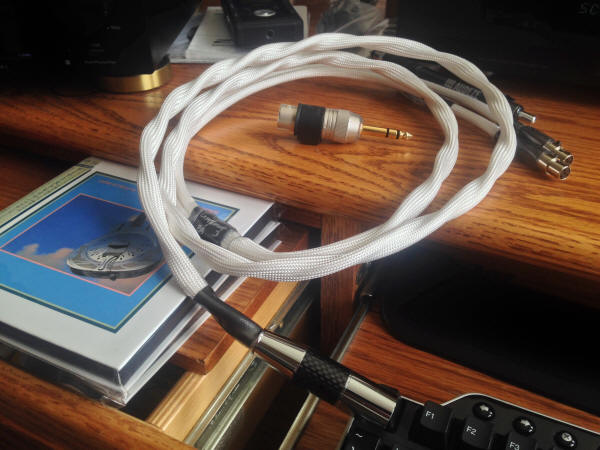
Double Helix Cables: Complement3 balanced headphone cables; balanced to PM-1 adapter; 2.5mm to balanced adapter
PF's Michael Mercer has been trumpeting the virtues of Double Helix Cables for headphones and the Personal Fi space for quite a while now. In fact, it's all his fault that I finally got intrigued enough by his howling to get in touch with DHC myself. Peter Bradstock, the CEO over there, is a great guy, and was good enough to send some samples of his Complement3 cables with various adapters and connectors to me to try with our reference headphones here: the Audeze LCD-3's, the Oppo Digital PM-1's, and the Sennheiser HD-800s. I've spent a lot of time with these bad boys…a lot of time.
And, you know: Michael is right. I've heard a lot of headphone cables over the years, but for now, the Double Helix Cables Complement3 and adapters take the cake. Really detailed; powerfully dimensional; and with tons of tone to burn…a pile of pluses, and no minuses that I can hear. They have sounded terrific wherever I've tried them.
Heads up! The DHC Complement3 is the current "Best that I've heard!" for 'phone cables.
A definite Brutus Award winner for 2014.
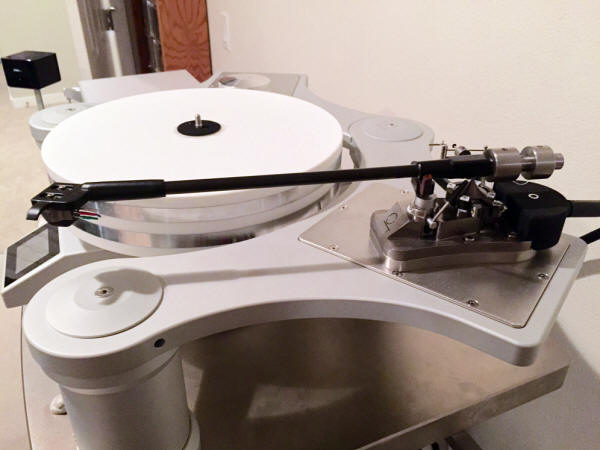
Durand Tonearms Telos 12" Composite tonearm
Joel Durand is a skillful musician up in Washington state.
He is also a skillful tonearm designer.
The Durand tonearms have been the golden rod between the Ortofon Anna MC/groove, and the brilliant Wave Kinetics NVS turntable. Having listened to the Durand Telos 12" Rosewood model for several years, and loving it quite heartily, Joel installed his latest version of the Telos, the 12" Composite. It's made of composite material, as the name implies, and is darkly handsome. In the months since, I have listened to this version with a variety of LPs, its character has become clear to me. It is a touch less warm in comparison to the wood version…a touch mainly noticeable if you've gone directly from one to the other…but is remarkable in its detailed and dynamic presentation of the music.

Picking between these two would be tough; they're of a piece, with the slight warmth vs. detail/quickness being the cusp of the decision, since they are the same price.
The Durand Telos 12" Composite tonearm is my new rave in unipivot tonearms for 2014, and gets a richly deserved Brutus Award.
JRiver Media Center version 20
This is simple.
If you're running Windows and are looking for the best in digital file playback for your computer, then JRiver's Media Center version 20 is it. Most importantly for me, MC 20 handles Single, Double, and Quad DSD files with ease, using either ASIO or DoP, depending on the drivers and DSD DAC attached. Both .DFF and .DSF with its associated metadata come up as they should…no problems at all. PCM is supported as well, all the way out to 384kHz, including DXD's 352.8kHz. .WAV, .FLAC, etc., etc….just about any flavor of PCM.
I use Media Center 20 exclusively here at PF, and also used it at our Hospitality Suite at THE Show Newport Beach 2014, for the playback of Double and Quad DSD music. Not one problem in three days of continuous operation. Excellent!
A clear Brutus Award winner in its category.
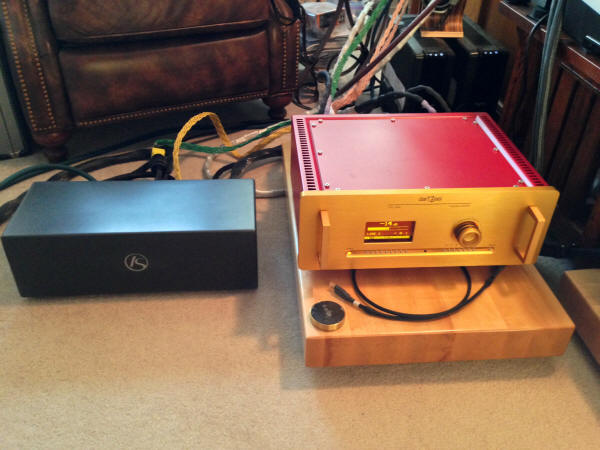
Kubala-Sosna Cables: the XPander power distribution unit; Elation! power cords; Elation! S/PDIF cable (the XPander is to the left in the photograph above)
Once again Kubala-Sosna hits my Brutus zone in 2014: Twice with their Elation! cables, predictably enough, but once with a product that really surprised me…the new XPander power distribution unit.
For years now, the Elation! balanced and unbalanced cables have been sitting high on my list of the best. This year, I was able to get my ears on the Kubala-Sosna Elation! S/PDIF cable. I've used a fair number of S/PDIFs over the years, but the Elation! bears away the bell for the best-to-date performance that I've experienced on the PCM side of the ledger.
I used it 'twixt the ModWright Oppo BDP-105 two-box tubed player and the Oppo HA-1's DAC section. The results were a noticeable gain in clarity and musicality…as much as PCM can deliver, anyway.
If you're serious about getting the best S/PDIF feed that you can for your DAC, then this is the very best cable that I can recommend, period.
The same holds true for the Elation! 15 and 20 Amp power cables, the latter of which was used with the XPander power distribution unit. Their signature is to have no signature…the more you use them, the less "cable" you hear, until a system that's 100% Elation! ends up sounding like it has no cables at all. It's really eerie…but true.
But the sucker punch from left field was the XPander power distribution unit. I didn't know what to expect when Joe Kubala sent it to me for a few weeks, telling me to have some fun and let me know what I thought of it. I tried it first in my desktop reference system, without prejudice. Everything was replugged into the seven-outlet XPander. Blammo! Amazing! The entire system seemed to shed some extra weight, a layer of electro-haze…like those extra pounds around your middle that you didn't realize you had…and to float in a sea of ease. Everything sounded better, because everything seemed to have shed the sense of "wires is us."
Same thing happened in our reference listening room, when Joe spent a day here. We simply dropped the XPander and its 20A Elation! power cable in the system as the power unit for the Playback Designs MPS-5. An Elation! 15A power cable was attached to the MPS-5 itself, and we put an Elation! USB cable prototype into the loop. The rest of the chain was finished by putting Elation! XLR cables into the main feed from Playback Designs MPS-5 to the Audionet Pre G2. All other power feeds there remained the same.
The result? BLAMMO! The improvement was so marked and obvious that I was laughing in seconds! The sense of "the wires just left the building" was so definite that I couldn't do anything else. Again, the music was at ease, organic, and just felt natural. It was a revelation to hear this effect. There's no doubt that this $5,400 component was making other components that cost many times its price point sound a lot better.
I was sure blue when Joe took the XPander and some of the Elation! cables back with him. The loss is very noticeable…leaves you melancholy. But Joe Kubala is a good fellow, and promised to send replacements in 2015, so the future is bright.
No doubt about it. All of these Elation! products, plus the EXPander, are Brutus Award winners for sure, and big time!
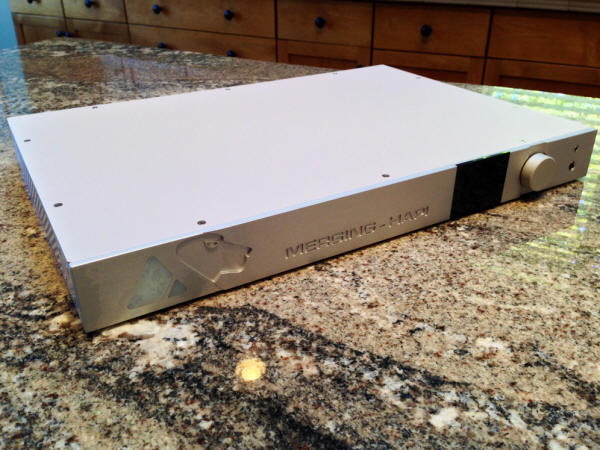
Merging Technologies HAPI Quad DSD A/D D/A, and Pyramix 9.1.5 digital audio workstation (DAW) software
While some folks have been wasting time wondering whether or not DSD was the real deal (Hint: It is.), Merging Technologies has been working away at its solutions for recording in DSD, DXD, and other flavors of PCM. Last year, I got to spend some time with their Horus unit (scales to 48 channels), their dedicated MassCore computer, and Pyramix 8.1, their digital audio workstation (DAW) pro-grade software package. I was blown away by the Quad and Double DSD transfers from analog tape that I was able to do with this system in 2013, and have shared some of my transfers with visitors to our PF Hospitality Room at RMAF and THE Show Newport Beach. The response has been extremely favorable, especially to the Quad DSD. As it should be…Quad DSD is out of this world!
For 2014, Merging released the kid brother to the Horus, the HAPI 8-channel A/D and D/A unit. It also uses Pyramix…in this case version 9.1.5. For up to 8 channels, Pyramix can run in Native mode, and you can use a notebook computer as home base. This is what I've done here, with a fully-dedicated Dell Precision notebook, employing a solid-state drive. Works slick!
If you want to hear how fantastic the Quad DSD transfers done with this system sounds, and want to hear why I'm giving this Brutus Award, go to NativeDSD.com's Yarlung Records section, purchase, and download any of the Yarlung Quad DSD albums, done so remarkably well by Bob Attiyeh. They were done with the HAPI that I have right here, and are the best testimony that I can give you to back this award.
A Brutus Award to the Merging Technologies gang, and richly deserved!
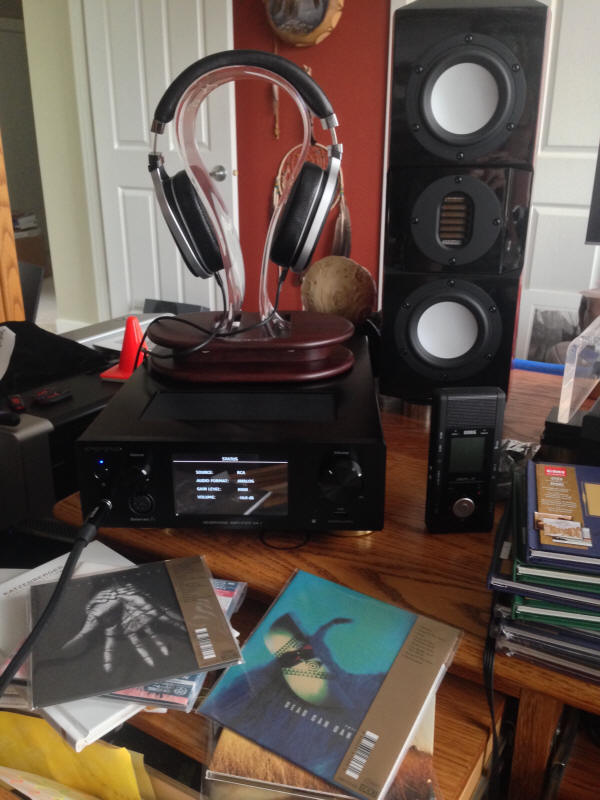
Oppo Digital: HA-1 headphone amp and Quad DSD DAC; PM-1 planar magnetic headphones; BDP-105 Darbee Edition
Oppo Digital has been one of the wonders of high-end audio over a number of years now. Their modus operandi has become very evident: Provide exceptional quality and very high utility in their high-end products, and do so at a very reasonable price point.
This year was no different. The Oppo HA-1 headphone amp is not only that, but also provides very good preamp capabilities, and a DAC that provides DSD all the way out to the Quad level (DSD256), plus PCM to 384kHz, including DXD at 352.8kHz. It works wonderfully with JRiver's Media Center 20, has a driver set this is very stable, and sounds excellent with every set of headphones that I've tried it with.
I also use it as a DAC/preamp to send signal to either the darTZeel CTH-8550 or the MBL C-51 integrated amplifiers. It's been dynamite with both…very transparent, very dynamic, and without a single problem.
The Oppo PM-1 headphones are…no surprise…a highly synergistic complement to the HA-1. Handsome, trim, with reasonable weight and a nicely balanced sonic presentation, they have pleased me through this year, and have seen a ton of use. Highly recommended, especially with the Double Helix Cables Complement3's! Ambrosia, folks!
Finally, the Oppo BDP-105 Darbee Edition has been in hard and continuous use in our home theater/surround sound room on the main floor. On the video level, the Darbee chipset did make an improvement in our watching on our calibrated Panasonic 65" Plasma, with colors seeming better rendered on tough Blu Ray discs like Pitch Black and Relic. Surround sound SACDs and multi-channel Single-DSD downloads like Peter Halstead's The Himalaya Sessions, Vol. 1: Pianist Lost: Excesses and Excuses (available from Bob Witrak's fantastic DSD site, High Definition Tape Transfers sounded simply glorious via the BDP-105 Darbee Edition. I played this last back by copying the multichannel DSD download to a USB drive, and then inserting into the USB port on the front of the 105. Then, using a monitor or TV, you navigate to the USB port, and then to the track that you want, and hit OK. Works like a charm!
Oppo Digital is a real blessing to the world of high-end audio. Their brilliant foresight to be out this far ahead of the game, inspired design work, and attention to keeping their products affordable in the often-inflated world of high-end audio pricing, has made them a regular on my Brutus Award pages, year after year.
And again in 2014!
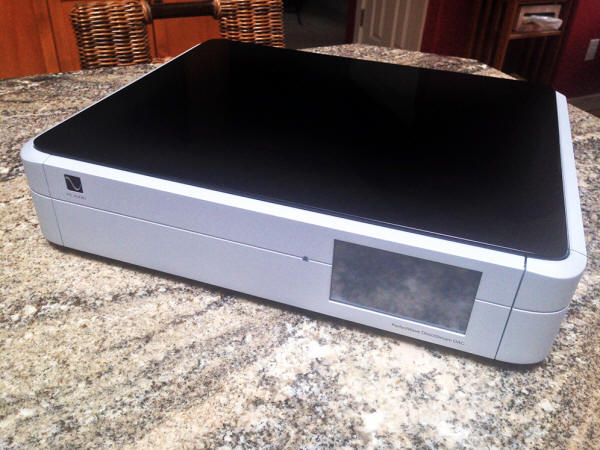
PS Audio DirectStream DSD DAC
PS Audio did a DSD DAC?! Yes, brother, and what a job they did of it, too!
For the first time, in 2014, I heard a DSD DAC that actually gave my reference standard Playback Designs MPS-5 with USB-X a run for its money. The MPS-5 has ruled the roost here since 2008, so this was a notable achievement on the part of the DirectStream DSD DAC.
My review earlier in the year (HERE) covered this significant DAC, and give you the reasons why it is on my Brutus Award list for this year.
A remarkable design, one that sets a standard for DSD-capable DACs, and a definite winner of one of my Brutus Awards for 2014.
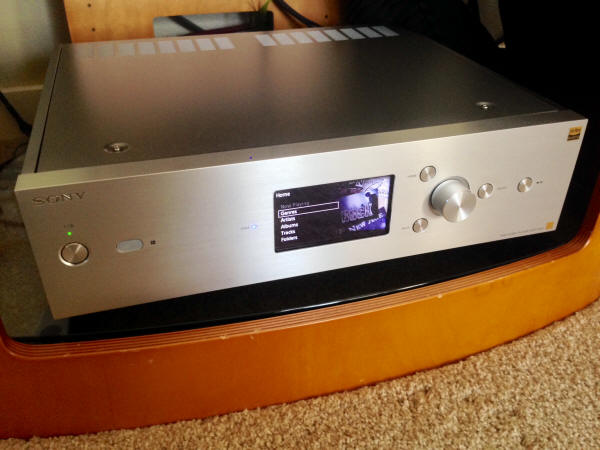
Sony HAP-Z1ES high resolution audio music server
Sony? Sony?!
Well yes, actually, Sony.
The company that actually founded the establishment of the DSD standard and SACDs (with help from the team at Phillips), has been mainly MIA in these pages for some years now, ever since they foolishly walked away from their SACD project at just the moment when it was beginning to develop real traction in the marketplace.
That's not to say that every division within the corporate creature is dead to SACD, or to the underlying (and more important) format transported by SACD, DSD.
To that end, and in support of the High Resolution Audio (HRA) initiative of CEDIA and CEA in 2014, Sony produced a couple of digital music servers, the bigger brother of which was the HAP-Z1ES. This audio appliance supports PCM in various flavors, and, more importantly, both Single and Double DSD playback. It has a 1 TB internal hard drive, plus a USB port for the plugging of an external HD, as well. This gives it an indefinitely extensible user space for music, an indispensable idea nowadays.
The Z1ES also has both hard-wired and wireless Ethernet interfaces, though both cannot be active at the same time. I use the wired interface for the loading of music via the HAP app, a file transfer tool available HERE. It works great with the Windows 7 Ultimate notebook package from HP that I use for DSD download operations. Wireless remote control of the Z1ES is very easy with the free iPhone/iPad utility obtainable at the iTunes store. On my local router in this room, I have two subnets going on my Cisco DLink; this is for security purposes, to segment the wired section of your LAN from the wireless section, which might be accessed from outside your walls. This means that you will have to switch Ethernet interfaces if you do things the way that I do: Transfer files over the faster wired Ethernet connection; remotely control the Z1ES via the wireless Ethernet connection. It works, but you have to use the settings control via the front panel menu to make this switch.
I've been using the Z1ES in our downstairs surround system, despite the fact that this is a stereo-only model. With DSD digital servers in two rooms upstairs already, this gives me the ability to enjoy DSD stereo downloads in the downstairs room. (Single DSD surround is handled through the USB port on the Oppo BDP-105 Darbee, as mentioned above.)
The sound of the HAP-Z1ES is really quite fine. It is smooth, detailed, and always musical, allowing the DSD downloads to shine. I'm quite taken with the performance and reliability of this component…Sony has done a real wonder here!
And at its MSRP price point of $1,995, this one is another reasonably priced high-end audio design that a number of audiophiles can afford.
The Sony HAP-Z1ES is therefore very highly recommended by me, amigos, and receives a Brutus Award for 2014. Keep it coming, Sony!

Soundsmith Hyperion MI cartridge
It's been quite a long time since I've upgraded the cartridge on my Walker Audio Proscenium Black Diamond turntable. In fact, my trusty MicroMagic Magic Diamond has been faithfully tracking my grooves on Lloyd Walker's superb turntable for many years. It has been treated like royalty, but the time had come for me to cast about for a new, current-generation reference cartridge.
Who to check with for recommendations? Clearly, the answer was "Lloyd Walker!" Lloyd is constantly working with his table, and knows what cartridges are up to the exacting standards that the Proscenium Black Diamond imposes.
I had talked with him a time or three over the past couple of years about what cartridges were among the best that he had tried. His most recent list included the Koetsu Coral Stone Platinum Diamond, the AirTight PC-1 Supreme, and the Soundsmith Hyperion. This last was a cartridge that I had heard rumors about from other sources, and I was intrigued by the fact that the cantilever was…well…a cactus spine!
Really?! It was hard to believe.
But Lloyd was definite that it was a very special phono cartridge.
I therefore got in touch with Peter Ledermann just before the NY show this year. We weren't able to connect at that time…too busy…but we did get together at RMAF 2014 in October. In fact, we ended up talking for over 90 minutes in the arboretum, as we discussed the Hyperion (I now know the story behind the cactus spine cantilever, why it is so amazing, why Peter went with a moving iron…not moving magnet…design, and why audiophiles should be flocking to the Hyperion), life, the universe, and the Creator. A truly fantastic time, with a remarkable thinker and audio designer, and many photographic opportunities. What could be better?!
The outcome was that Peter send a Soundsmith Hyperion shortly after RMAF, and we flew Lloyd Walker out to do the installation and dial-in of the cartridge.
The results? In a word: superlative! The Hyperion is everything that the buzz had intimated, but it was more than that. Absolutely transparent, that king of audio virtues, revealing every detail and nuance of the grooves, regardless of pressing or type of music. In fact, most of what is called "groove noise" simply went away with the Hyperion. This is due to the unique nature of the cactus spine, and its ability to cancel most of the reflected vibrations back from the moving iron. By eliminating the reflected, unwanted "backwash" vibration, the Hyperion lets the groove information go up, but nails it before it goes back down into the groove, thus creating unwanted signal and interfering with the tracking of the stylus.
This is very important…an achievement of signal (literally) significance.
Pay attention, my friends: Based on what I've heard here in our reference system, the Soundsmith Hyperion is the best cartridge that I've ever heard.
Want to hear what's really in your grooves? The Hyperion will do it for you. If you can afford it, you must give this one a go! Your LPs will thank you.
Revolutionary, and a screaming Brutus Award winner for 2014!
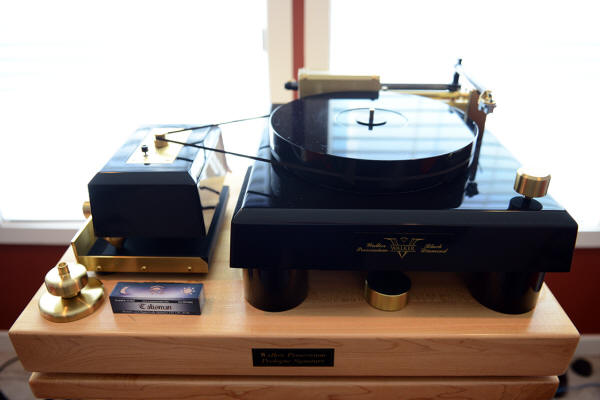
Walker Audio: Proscenium Black Diamond Level V turntable; Procession phono amp; Eliminator Directional Antennae; Crystal Reference Record Clamp; Black Diamond Room Treatment kit; and the Black Diamond Cartridge Crystals
Yes, that's right. I gave Walker Audio six…count 'em, six…Brutus Awards this year. Lloyd Walker was good enough to come out twice in 2014, once in June after THE Show Newport Beach, and once in November. The June visit was to upgrade my Proscenium Black Diamond Level III turntable to Level V. Additionally, he installed his incredible new reference phono amp, the Procession. That was quite a whirlwind trip, as Lloyd and Fred Law, his associate, had only one day to get everything done. It took all day for them to do the work, and they had to rush out after that for their flight the next day.
Lloyd came out again in November to install Peter Ledermann's Soundsmith Hyperion cartridge (see above for my notes about the Hyperion) on the Level V turntable, to replace the phono plugs to the Procession with Silent Source silver plugs, directly soldered to the central RCA pin, and also to install a series of system enhancements to the turntable system and the room.
My review notes on these two huge steps forward in my Proscenium turntable system will be published very soon now. In sum, though, Walker Audio's Level V turntable, the Procession phono amp, and the Crystal Reference Record Clamp transformed the Level III version with its earlier reference phono amp and record clamp into something extraordinary. The transparency, detail, and quickness of the Proscenium Black Diamond Level V are in a whole new dimension of audio performance. When we added the final enhancements…several Eliminator Directional Antennas to drain RF, the Black Diamond Room Treatment Crystals, and the Black Diamond Cartridge Crystals…the noise floor dropped noticeably, and the room seemed to become more spacious, with less sense of the walls as boundaries.
All of this was quite symbiotic with Peter Ledermann's Soundsmith Hyperion Moving Iron cartridge. The level of detail rendered by this cartridge, with effortless ease, was aided and abetted by the Walker Audio Proscenium Black Diamond Level V, and its supporting cast of components and enhancements.
All of these products deserve praise for the new benchmark they've realized in my listening room. This accomplishment is extreme, and these designs are worthy of the six Brutus Awards that I've given them.
Done!
Music Companies
There are also a handful of record labels that I would like to recognize with my Brutus Awards for their significant accomplishments and releases in 2014. These are listed in alphabetical order.
2L – Morten Lindberg and company have been producing brilliant new recordings year in and year out for a long time now. I have esteemed their DXD (352.8kHz PCM) recordings, which are usually also offered in SACD/DSD format (which I prefer to the Blu Ray versions), for their clarity, purity, and superior sound. Morten has a gift for selecting superior venues, and capturing lovely, dynamic performances with skillful art. Recordings like the glorious Magnificat and Symphonies of Wind Instruments remind me of why we love classical/orchestral music so much, and what it does for our souls. Kudos to Morten Lindberg and these great recordings!
Acoustic Sounds – Chad Kassem and company continue to top my list of Brutus awards for recordings. Not only does AS sell reissues from various companies, but they produce reissues themselves under their Analogue Productions name. Their reissues set the bar for all other work done in this domain. Quality Record Pressings (QRP), after some initial startup issues back in 2013, has now hit its stride, with 200 grams of coolosity in both 33.3 and 45 RPM flavors. I've been very taken with the excellence of their work, whether auditioned with the Wave Kinetics NVS turntable/Durand Tonearm Telos/Ortofon Anna MC, or the Walker Audio Proscenium Black Diamond (Levels III and V) with either the MicroMagic Magic Diamond or (especially) the Soundsmith Hyperion. I'm a huge fan of their RCA Living Stereo reissues in particular, but various of the pop/rock/blues genres are also compelling. Chad and company make every effort to assure the very best sources for these albums, provenance being a huge behind-the-scenes war between the major labels and reissue projects. Superb mastering, with flat LPs and very low groove noise/tics-n-pops. Great stuff!
The Analogue Productions SACDs have maintained very high standards from the beginning. 2014 saw a floodtide of SACD titles (usually in parallel with LP reissues, as praised above), without a disappointment at this end. I always purchase AP SACDs with confidence; you can too.
A major Brutus Award here!
Audio Fidelity – Audio Fidelity has become a very fine source of excellent A&R and exceptional analog-to-DSD transfers. During 2014, many of my favorite SACDs came from AF, including artists like Eric Clapton; Super Session's Steve Stills, Mike Bloomfield, and Al Kooper; Blood, Sweat and Tears; Peter, Paul and Mary; Nat King Cole; America; Rush; Paul Butterfield Blues Band; Styx; Heart; Sarah McLachlan…can't top such a great selection! They even included two collections of "greatest hits" from the 1980s, which were both high fun to hear, though I'm sure that they must have been a real challenge to transfer….
The discs show the legendary care of audio engineers and artisans like Steve Hoffman, Kevin Gray, and Bob Ludwig, and are always a revelation to me of how good SACDs can be as a reference optical source for our treasured recordings.
Audio Fidelity deserves real recognition for their superior A&R and the work that they've done in 2014, providing us with many albums that haven't been on SACD before. And now that they're including some multi-channel SACDs, as well, we are all deeply in their debt!
This Brutus Award is given with real enthusiasm. Encore, Audio Fidelity!
Blue Coast Music – Over on the Left Coast, Cookie Marenco and crew have been carrying on with educating the public about DSD, providing free DSD samples, doing some transfers from analog to DSD, and are also producing many new titles in DSD. Her site, with their store, is a great mall shop for a number of different types and titles of music. I have been particularly taken by the San Francisco Symphony Mahler sequence in DSD, as well as some of the artists well represented on her Blue Coast "Collection" series.
Cookie is a gifted producer and recordist; I strongly recommend her work in DSD or SACD.
Brutus Award given!
Channel Classics – Jared Sacks of the Netherlands-based Channel Classics has been knocking me out with his brilliant classical recordings in DSD for years now. His SACDs first caught my ear some twelve or so years ago…I have a goodly stack of them now…but the work that he has done to further the cause of DSD has made him perhaps the most active of the artists behind DSD as the ultimate download format. Once again, his native Single DSD recordings shine forth as examples of just how spectacular DSD can be in rendering classic music with exquisite purity. (Double and Quad DSD are even better, believe me!)
And now Jared and company have added a growing number of multi-channel DSD downloads to their site, allowing those of us who treasure m/c DSD playback to add to their collections. The results at this end have been superb in our surround-sound room. Using the USB DSD playback option on the Oppo Digital BDP-105 Darbee Edition has allowed me to turn that room into a lovely concert hall-like experience! Those of you who own Oppo 105's should be looking at this option if you have surround setups in play. You will not regret it.
Another Brutus Award for Jared Sacks and Channel Classics in 2014!
High Definition Tape Transfers – Bob Witrak of HDTT is a man on a roll. Once a high-resolution PCM company, HDTT now features analog-to-DSD transfers of some excellent, lesser-known recordings at very reasonable prices. For example, Single DSD titles are $16, Double DSD are $18, while Quad DSD transfers are $26…all reasonable price points.
Bob's site allows us to browse and purchase classical and jazz albums easily. Titles like the Ellington Indigos in Double DSD or the Howard Hanson in Quad DSD are extremely well done, and are in my collection of true reference recordings for review work. Just wait until you hear them!
This is an easy Brutus Award for me to give…done!
Impex Records – Abey Fonn, CEO of Impex Records, has been quietly putting out first-class LPs for several years now. After years spent at Cisco Music (remember them? King Records?) with the very fine reissues there, and after that company went out of business, Abey eventually put together Impex Records as the current generation embodiment of those standards of excellence. Assisted by the "three Bobs"…Robert Pincus, Robert Sliger, and Robert Donnelly…Abey's A&R has been really great, including Miles Davis, Willy Nelson, Thelonius Monk, Jennifer Warnes, the Dave Brubeck Quartet, and Johnny Cash. Hard to top that.
There are Gold CDs as well, but they do not figure into this Brutus Award. I am basing my recognition of Impex's achievement on their LPs.
Abey Fonn and the "three Bobs" deserve this one…done!
Mobile Fidelity – Mobile Fidelity is one of the premier brands in high-end audio, and has been reissuing great LPs, CDs, and SACDs for decades now. After their brief collapse into bankruptcy back in 1999, the reorganized Mobile Fidelity emerged in 2001 under the ownership of Music Direct. Since that time, they have reissued a number of great titles in SACD and LP formats. Their A&R has been impressive for a long time, and that has continued in 2014. I'm experiencing an embarrassment of riches, sitting in the midst of SACDs from the likes of Bob Dylan, The Grateful Dead, Weezer, Love, Miles Davis, The Allman Brothers…the list goes on and on. Likewise, they're putting out some great A&R on LPs.
Unfortunately, MoFi has decided not to get into DSD downloads. Perhaps that will change in 2015…we'll see.
Meanwhile, their SACDs and LPs keep me pretty broke, but very happy.
That's a sign of a label that deserves one of my Brutus Awards. Consider it done.
NativeDSD.com
Jared Sacks and company have not confined their efforts in DSD downloads to their Channel Classics site. In addition, they have started an online DSD download mall site called NativeDSD.com, featuring twenty different labels at the current time. With mall sites, you get the convenience of going to a single URL to access a number of different labels and their DSD downloads. In this case, Jared Sacks has assembled a fine array of labels and their initial offerings in DSD, ranging from his own Channel Classics with an impressive current total of 173 albums, and the well-known Harmonia Mundi with 53 albums, to Yarlung Records with only eight albums to date…but those eight are all in Quad DSD! (They are simply stunning transfers done directly from 15 ips half-track master tapes, by the way.)
NativeDSD offers both stereo and multi-channel (where available) versions of their DSD downloads, and in as many flavors of DSD as is possible. The interface to select the version or versions that you desire is quite intuitive, and makes shopping here quite pleasant. The transaction system works well, and the downloading is reliable. You'll get .ZIP files that can be extracted to a target folder…the NativeDSD .ZIPs will extract the folder structure for you after that. (I have been using the utility WINZIP to do this for many years now.)
I am extremely impressed by the sophistication of the NativeDSD.com mall site, and by the content of the music that is there. If you'd like to try before you buy, there are free sample tracks there regularly…you can try it out for yourself.
This site has it all, and will only get larger over time. No doubt about it: NativeDSD.com is a definite Brutus Award winner for 2014!
Opus3 Records/DSDfile.com
Jan-Eric Persson of Opus3 Records and DSDfile.com hopped onto the SACD/DSD bandwagon way back at the beginning. Before that, his LPs were a delight…I have a number of them. He even sells some open reel tapes of his open reel master tapes, his "Analogue Masters" series. When DSD downloads came along, Jan-Eric tried it out and was knocked out by the quality that Double DSD produced. He and his associates therefore set up a download site, DSDfile.com, and began offering Single and Double DSD files.
The results? Fantastic! I have a number of the Double DSD albums from Jan-Eric, and I can tell you that they are simply superb. Not only that, they are very reasonably priced: USD $17.99 for Single DSD, and USD $19.99 for the Double DSD. I recommend that you put up the extra two dollars(!) to purchase the Double DSD version of any title here, since there is a definite gain in performance over the Single DSD.
Opus3 Records is taking their catalog to the next level here; I strongly recommend that you try Jan-Eric's recordings in Double DSD. I don't think that you could possibly regret it.
(Perhaps in 2015 he will try Quad DSD transfers…one can only hope.)
A 2014 PF Brutus Award winner, once again!
SHM-SACD (Universal Music Japan)
I have been following Universal Music Japan's DSD releases on SHM-SACD for several years now. I'm a sucker for great A&R, as we all should be, and Universal Japan has been doing that all along. We're getting to see the sort of titles that Universal might have released had Sony not mucked up SACD when they did. (This remains one of the most massive screw-ups in the history of audio, in my opinion. I am nowhere near alone in this view.)
2014 saw a continuation of SHM-SACD releases, refreshing in both their quality and their quantity. Note that SHM-SACDs are truly purist discs, exceptional in their construction. SHM stands for "Super High Material," since the material used for the transmission layer on the disc is a more transmissive polycarbonate, and not the standard material used on SACDs. The disc has only the stereo version of the recording…no multi-channel…and also no CD layer, so it isn't a hybrid SACD.
Stereo only, DSD only, period.
The notes with the disc are very good, with separate cover art inside that is a pleasure to see and adds to the collectability of the reissues, but I do wish that Universal Japan would include information about how the transfer was accomplished. They do state that the mastering was done from analog to DSD, best as I can make out (except in the case of the Queen SHM-SACDs, which were done from PCM masters…which is why I quit buying that series). But at these prices, I would expect information about the provenance of these titles, and who and how the transfers were done.
These are very limited production runs…I would guess that we're seeing something like 2,500 SHM-SACDs per title. Many have already sold out, including the terrific 2014 album, Tears For Fears' Songs From the Big Chair. (Yep. All gone, already.) So you have to jump on the SHM-SACDs that you like, as you may not be able to get it later.
Some have complained about the current USD $60 price per SHM-SACD. Naturally, I do wish that the price was lower, but I have some sense of the economics of reissues that are done at this very high level of quality, and at lower production runs. It really puts pressure on the price, in order to amortize these costs. Given the fact that 45 RPM reissues often run up to $50 a pop for the really good stuff, I'm willing to ante up for the kind of A&R that Universal Japan is offering.
Apart from that, I have really enjoyed the sheer music variety, and the general quality of the transfers that I'm hearing. (But provenance! Do the right thing and tell me how the job was done!)
Universal Japan's SHM-SACDs are definite PF Brutus Award winners again in 2014.
SuperHirez
Chad Kassem's launch of SuperHirez.com was a huge breakthrough for high-resolution downloads, especially for DSD. (Does anybody need another empty-headed PCM download site? With apologies to Lou Reed and his song "Strawman.") In 2014, SuperHirez made major strides in releasing major titles from Sony Music, Blue Note, Universal Music Group, and some of the indies. The prices were generally less than the equivalent SACDs, there is an excellent diversity of genres, and the quality of the A&R is absolutely first-rate. I've added dozens of titles to my collection of DSD downloads, and have used a number of these titles as Single DSD references. (For example, Beck, R.E.M., Michael Jackson, The Rolling Stones, Frank Sinatra, Shelby Lynne, Dave Brubeck, Soundgarden, Bob Dylan…enough said!)
Note that SuperHirez just recently added a double DSD title to its site…the venerable but still excellent Jazz at the Pawnshop…so it would appear that Chad and company intend to pursue higher levels of DSD playback. That's all to the good!
With SuperHirez.com, you can definitely count on solid provenance, high levels of care in transfers and production work, and constant updates to their site with major artists and labels.
This is a top DSD download site for the major A&R, and an obvious winner of one of my Brutus Awards here in 2014.
Yarlung Records
Finally, I must recognize Bob Attiyeh and Yarlung Records for making the decision to take their truly great analog recordings (15 ips half-track quarter-inch tape) directly to Quad DSD. Working with Jared Sacks, Tom Caulfield, and the other folks at NativeDSD.com, Bob handled the raw transfers from his master tapes via the Merging Technologies HAPI A/D to Quad DSD. The inimitable Tom Caulfield, a Grammy winner himself, did the post-production work, and then sent the DSD files along to NativeDSD for publication. The first eight titles (of an eventual twenty) are already for sale HERE.
I've already listened to the first eight titles (review forthcoming shortly), and can tell you that you can't go wrong with any of these. Ranging from Argentinian Tango (a favorite of mine), to world music, to marvelous classic (the Mahler 5 is another particular favorite). They are all very fine, and will show you Bob's intuitive mastery of the audio arts.
Yarlung Records are another Brutus Award winner for this year…and very rightly so.
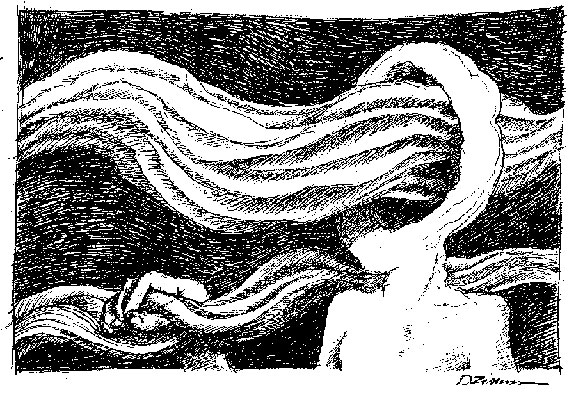
[All photographs and processing by Robinson; cartoon by Dan Zimmerman]




